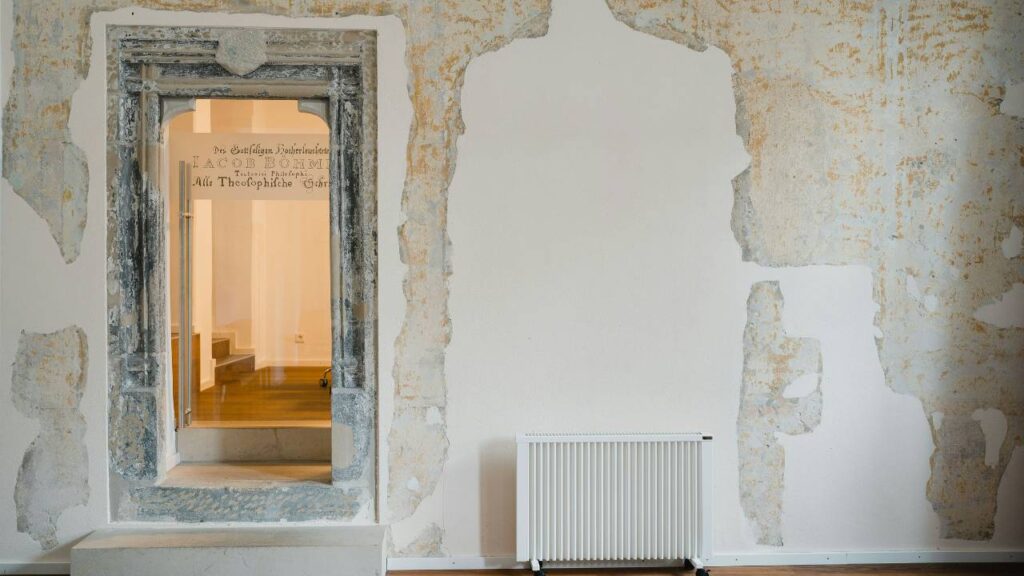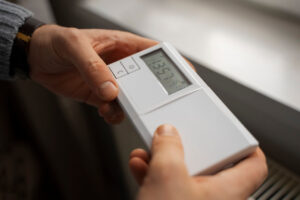Are you tired of fluctuating indoor temperatures and high energy bills? Internal wall insulation could be the solution you’re looking for. By adding insulation to your internal walls, you can significantly improve your home’s energy efficiency, making it warmer in the winter and cooler in the summer. This simple upgrade can result in greater comfort and substantial savings on your energy bills.
Imagine coming home to a cosy, energy-efficient house no matter the season. Internal wall insulation doesn’t just make your home more comfortable; it also contributes to a more sustainable lifestyle. By reducing the need for heating and cooling, you’re not only saving money but also helping to lower your carbon footprint.
For those who are concerned about the aesthetic impact, don’t worry. Modern insulation materials are designed to be discreet and effective. You’ll be able to maintain the aesthetic of your interior while reaping the benefits of improved comfort and energy efficiency. Stay tuned to learn how to get started with internal wall insulation and make the most out of this valuable home improvement.
Understanding Internal Wall Insulation
Internal wall insulation plays a vital role in maintaining indoor comfort, energy efficiency, and reducing heating costs. This section will explore the different types of internal wall insulation materials and how they compare to external wall insulation solutions.
Types of Internal Wall Insulation
There are various types of materials used in internal wall insulation, each with unique properties. Mineral wool, polystyrene, and polyurethane foam are three common options.
Mineral wool is popular due to its excellent soundproofing capabilities and resistance to fire. It’s made from natural or synthetic minerals and offers a high level of insulation efficiency.
Polystyrene is another choice, known for its moisture resistance. It’s easy to install and lightweight. This material provides a good thermal barrier but may not offer the same level of soundproofing as mineral wool.
Polyurethane foam offers superior thermal insulation and is commonly used where space is limited. It expands to fill cavities, ensuring no air gaps. However, it’s more expensive than other options and requires professional installation.
Comparing Internal and External Insulation
When deciding between internal and external insulation, each has advantages and disadvantages. Internal wall insulation is less disruptive to the building’s exterior and can be done room by room, which is practical for occupied properties.
On the other hand, external wall insulation doesn’t reduce your living space and often offers better overall insulation. It’s ideal for buildings with solid walls, such as older properties.
External options can involve higher upfront costs but can also improve the external appearance of your home. While both types are effective, your choice will depend on factors like your property’s structure, budget, and specific insulation needs.
Benefits of Internal Wall Insulation
Internal wall insulation offers several significant advantages. It enhances your home’s thermal efficiency, lowers energy bills, and reduces your carbon footprint, making it an environmentally friendly choice.
Enhanced Thermal Efficiency
Internal wall insulation helps to reduce heat loss through your walls, keeping your home warmer in winter and cooler in summer. By creating a barrier to heat transfer, it stabilises indoor temperatures.
You’ll notice improved comfort in your living spaces, as the insulation prevents cold spots and draughts.
Moreover, it allows you to better control the indoor climate, reducing the need for excessive heating or cooling.
Reduced Energy Bills
With improved thermal efficiency comes lower energy bills. You’ll use less heating and cooling, which means your utility costs will drop.
Internal wall insulation contributes to more consistent and efficient energy use.
The result is not only financial savings but a more sustainable home. You’re effectively investing in a long-term solution to reduce your energy expenses.
Environmental Impact
Installing internal wall insulation has a positive impact on the environment. By reducing your energy consumption, you lower your carbon footprint.
Less energy use means fewer greenhouse gas emissions, contributing to the fight against climate change.
It’s an environmentally friendly choice that supports broader sustainability goals.
Choosing Insulation Materials
When selecting insulation materials for your internal walls, it’s essential to consider thermal performance, ease of installation, and cost-effectiveness. Different materials have unique properties that make them suitable for specific situations.
Evaluating Insulation Material Types
Mineral Wool: This material provides excellent thermal and sound insulation. It is non-combustible, adding a layer of fire protection. Although slightly more expensive, it is durable and has a long life span.
Foam: Available in various forms such as spray foam and rigid foam boards, foam offers high R-values, meaning better insulation. Spray foam seals gaps effectively, while rigid foam boards are easy to install but can be more expensive.
Polystyrene: Generally used in the form of rigid boards, polystyrene is lightweight and moisture-resistant. It’s a cost-effective option but can be more prone to fire hazards unless treated with flame retardants.
Special Considerations for Materials
When choosing materials, consider environmental impact. Mineral wool is often made from recycled materials and is eco-friendly. On the other hand, some foams can off-gas harmful chemicals.
Consider installation requirements. For example, foam might require professional installation if using spray foam. Mineral wool and polystyrene boards are typically DIY-friendly.
Check for moisture control capabilities. Some materials like polystyrene are naturally moisture-resistant, beneficial for damp areas. Mineral wool and foam need additional barriers in such environments.
Dealing with Dampness and Condensation
Internal wall insulation can combat cold spots and improve energy efficiency, but dampness and condensation can become issues if not carefully managed.
Causes of Dampness
Dampness in walls often results from poor ventilation, leaks, or rising damp. Condensation typically occurs when warm, moist air meets a cold surface, causing water droplets to form.
Leaks in roofing or plumbing can also contribute to dampness. Additionally, ground moisture rising through foundation walls can lead to serious problems if not properly managed.
Prevention and Solutions
To prevent dampness, ensure proper ventilation in your home. Installing extractor fans in kitchens and bathrooms can help remove moist air. Use a vapour barrier to prevent moisture from permeating through walls.
Regularly check for and repair leaks in roofing, windows, and plumbing. Applying damp-proof courses can be effective against rising damp.
For condensation, maintaining a consistent indoor temperature and using dehumidifiers can keep moisture levels in check. Insulating cold surfaces also helps reduce condensation risks.
By implementing these measures, you can enjoy the benefits of internal wall insulation without the drawbacks of dampness and condensation.
Installation Process and Best Practices
Learn how to successfully install internal wall insulation using best practices, ensuring effective insulation and a high-quality finish. This guide covers preparation, installation steps, and final touches.
Preparing for Installation
Before beginning, it’s crucial to prepare your space. Clear the room of furniture and decorations. Remove any existing wall coverings such as wallpaper or paint. Examine your walls for cracks or dampness and repair these issues to prevent further damage.
Discuss your insulation options with a professional. Consider using rigid insulation boards or dry lining. Both offer excellent thermal performance but differ slightly in application. Secure necessary tools such as adhesive, a utility knife, a saw, and measuring tape.
Ensure proper ventilation during the preparation phase to prevent the buildup of dust and debris. Always wear safety gear, including gloves, goggles, and a mask. Having prepared effectively, you are now ready to begin the installation.
Step-by-Step Guide
Start by measuring your walls accurately and cutting the insulation boards to fit. Apply adhesive to the back of each board. Press the insulation board firmly against the wall ensuring no gaps. Use a spirit level to check it’s even.
For dry lining, attach the boards using screws or mechanical fixings. Leave a small gap at the top and bottom for ventilation. This will allow air to circulate and prevent moisture buildup behind the boards.
Seal any gaps or joints with appropriate tape or filler to improve the insulation’s effectiveness. Check that all boards are securely fixed before moving on to the next stage.
Finishing and Decoration
Once the insulation is in place, it’s time to finish and decorate. Begin by applying a layer of plasterboard over the insulation boards if it isn’t already fixed. Secure it with screws and ensure the joints are smooth.
Skim-coat the plasterboard with a layer of joint compound for a smooth finish. Sand down any rough patches after it’s dry. This surface will make painting or wallpapering much easier and more effective.
Choose your decor carefully. Opt for breathable materials to maintain good air quality and enhance the thermal efficiency of your newly insulated walls. Enjoy your warm, energy-efficient space!
Cost and Regulations
Understanding the cost and legal aspects of internal wall insulation is crucial. From estimating installation expenses to ensuring compliance with building regulations, this section covers the essentials.
Estimating Installation Costs
When budgeting for internal wall insulation, consider both material and labour costs. On average, the cost ranges between €45 and €100 per square metre, depending on the insulation material used, such as rigid foam boards, fibreglass batts, or mineral wool. Labour typically accounts for about 60% of the overall cost.
Many homes might be eligible for grants or funding from the Sustainable Energy Authority of Ireland (SEAI). The Better Energy Homes programme offers financial assistance to make energy-efficient upgrades more affordable. Additionally, SEAI offers an online cost estimator tool to help you figure out your specific financial needs.
Knowing the potential expenses and available support options can significantly help you plan your project effectively.
Building Regulations for Internal Wall Insulation
In Ireland, internal wall insulation projects must adhere to specific building regulations to ensure safety and effectiveness. According to the Building Regulations 2011, technical guidance documents L (Conservation of Fuel and Energy—Dwellings) provide essential standards for these projects.
Regulations cover aspects like moisture control, fire safety, and ventilation. Insulation should be installed in a manner that prevents condensation and mould growth. Fire safety requirements may include using fire-resistant materials in specified locations.
For proper ventilation, regulations often require continuous or intermittent extraction systems in kitchens and bathrooms to maintain air quality. Ensuring compliance with these rules not only safeguards your home but can also qualify you for grants and funding, making your investment even more cost-effective.
Maintaining Your Insulated Walls
Proper maintenance of your insulated walls can extend their lifespan and improve energy efficiency while preventing issues like dampness.
Routine Checks and Upkeep
Regular inspection should include checking for signs of wear or damage to the insulation. Look for any noticeable gaps or areas where the insulation may have settled or shifted.
Ensure that ventilation is adequate to avoid moisture buildup. Dampness can compromise insulation effectiveness and lead to mould growth.
It’s also a good idea to examine areas near windows and doors, where insulation may be more vulnerable. Apply sealant if you detect any cracks or gaps.
Keep an eye on any changes in your energy bills, which might indicate insulation performance issues. Address problems immediately to maintain optimal energy efficiency. Thorough routine checks will help you catch minor issues before they require significant repairs.
Long-Term Care and Improvements
Long-term care involves upgrading insulation materials as needed. Over time, older materials may become less effective. Consider replacing or adding more insulation for better thermal performance.
Handle any signs of persistent dampness by addressing potential sources such as leaks or inadequate ventilation. Improving wall insulation might mean enhancing other parts of your home’s thermal envelope, including attic or basement spaces.
Stay updated with advancements in insulation technology. Newer materials often provide better energy efficiency and moisture resistance. Investing in these could offer better returns in terms of both comfort and cost savings.
Proper long-term care not only ensures the longevity of your insulated walls but also enhances overall energy efficiency and sustainability.
Conclusion
By integrating internal wall insulation into your home, you’re poised to enjoy a range of benefits. These include energy savings, improved thermal comfort, and enhanced soundproofing.
Whether you’re opting for insulating boards, flexible slabs, or spray foams, each material has its unique advantages. Always consider cost, installation complexity, and insulation effectiveness.
Make sure to consult with professionals to ensure proper installation, which is key to achieving the desired results. If you’re a DIY enthusiast, follow manufacturer guidelines closely and use the right tools and safety measures.
Take the time to assess your specific needs and preferences. Your effort can lead to significant long-term benefits for both your home and the environment.
Enjoy your new, more energy-efficient living space!


